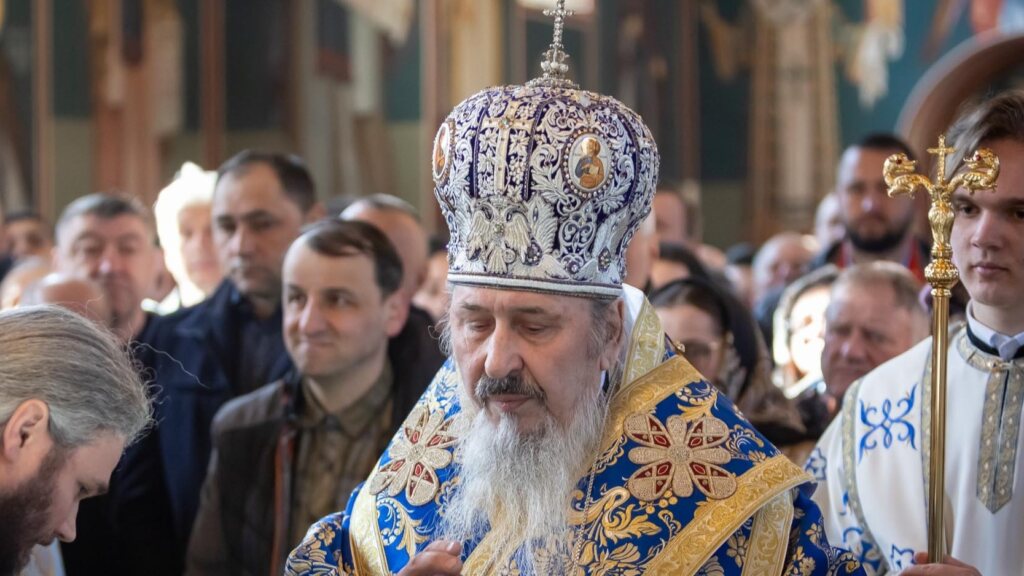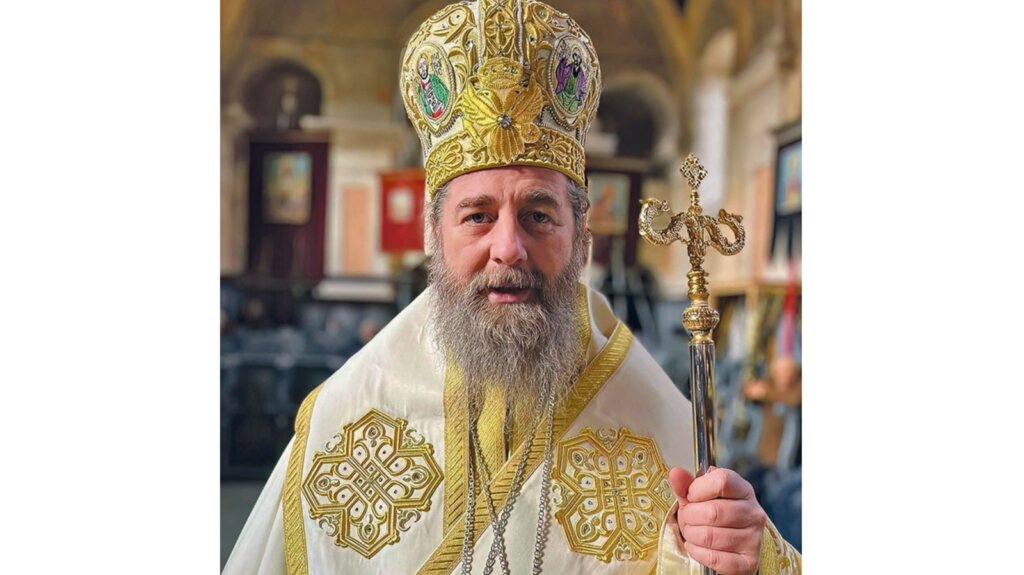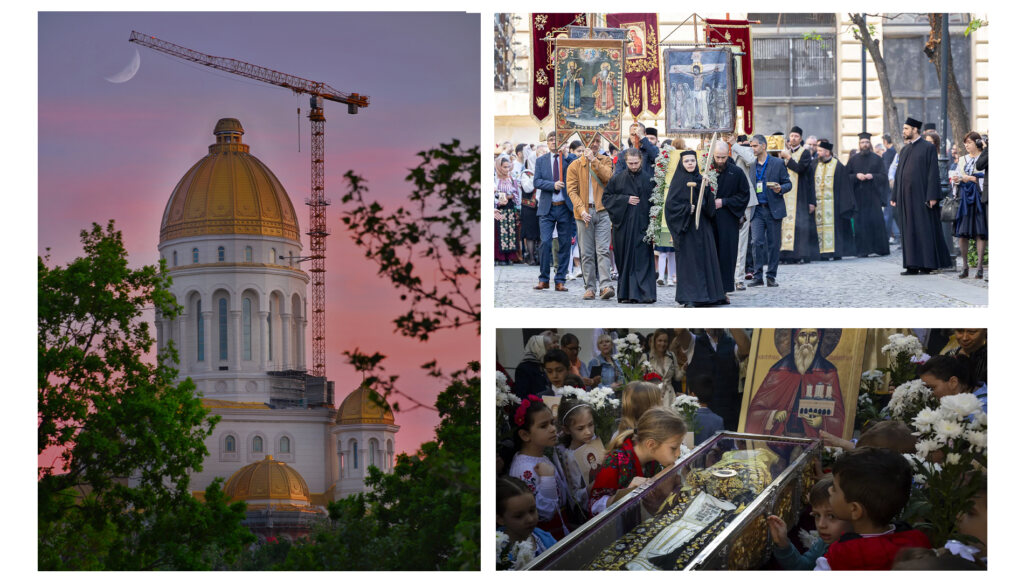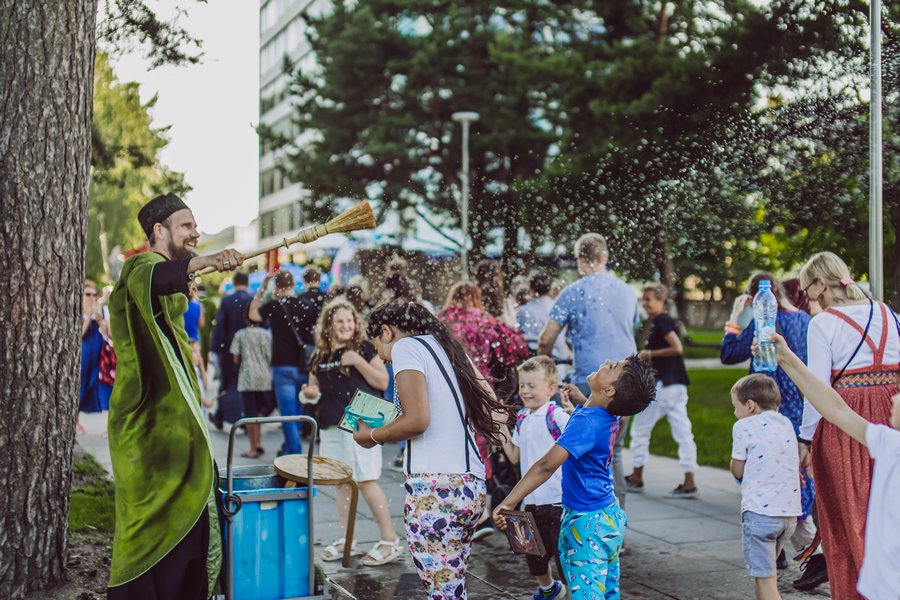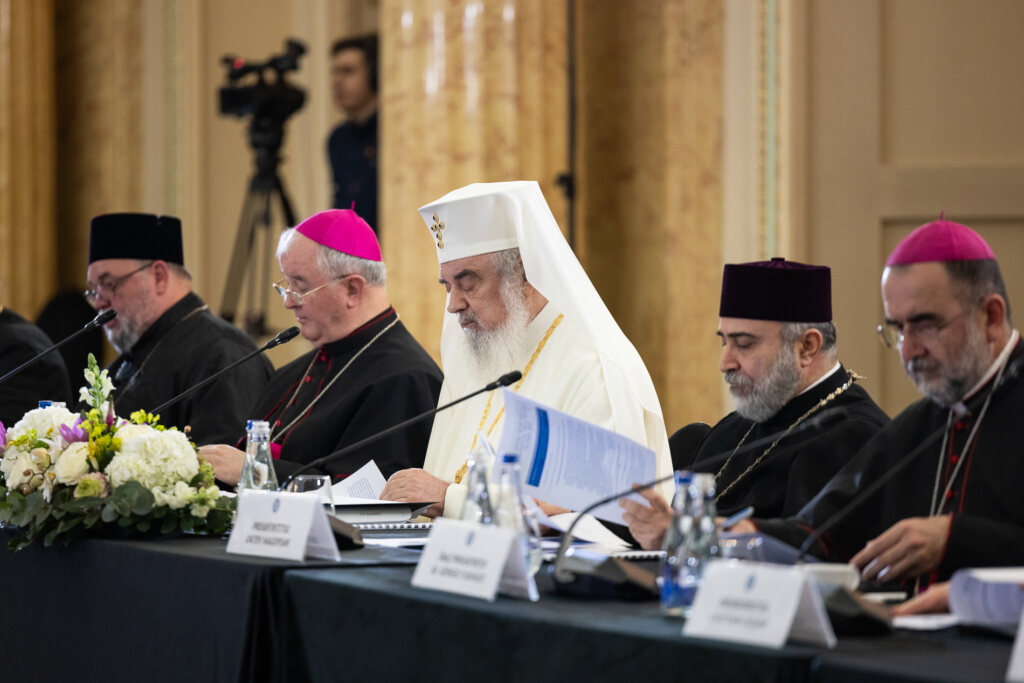The Center for Orthodox Studies published an article signed by George Alexander, one of the founders of the Orthodoxy Cognate Page Society, which presents the mission of the Romanian Orthodox Church during the patriarchate of His Beatitude Patriarch Daniel.
The article entitled The Resurgence of the Romanian Orthodox Church – Personal reflections presents a brief history of our Church, with an emphasis on the transition from the communist regime to the present.
Considered “a new era in the history of Romanian Orthodoxy,” the patriarchate of His Beatitude Patriarch Daniel is seen as a revitalization at the administrative, social, media, educational and interfaith level.
“The founding of the Basilica News Agency revolutionized the media approach of the Romanian Church,” writes the author who appreciates the activity of the Media Center of the Romanian Patriarchate but also the diocesan sites that he considers “neatly maintained.” “In notable addition, the Basilica news agency has emerged naturally as one of the leading and most trusted new agencies in Romania. The Romanian Orthodox media centre has successfully reached out to the masses.”
The article highlights the efforts of the Orthodox Church in supporting disadvantaged people, especially during the Covid-19 pandemic, but also the efforts of the laity, educational and catechetical programs, relations with state authorities and other religious denominations in the country.
The Resurgence of the Romanian Orthodox Church – Personal Reflections: full article
Romania is one of the most attractive countries located eastern part of Europe. It is an undiscovered gem in the eyes of travellers and explorers. The beauty of Romania exerts an enormous influence on the Romanian Orthodox Church. The fusion of the beauty of Romanian land and the spiritual beauty of Orthodoxy has resulted in a vibrant culture and diverse heritage in the region.
Romanians fondly cherish the apostolic Tradition of St Andrew the first called, one of the twelve disciples of Jesus Christ. It is one of the 14 autocephalous Churches within the Byzantine Eastern Orthodox communion of Churches. It is also one among the five Junior Patriarchates, and it is the only Eastern Orthodox Church to employ Romance language for the liturgy. Romania is the third-largest Eastern Orthodox country in terms of population. Russia leads the graph followed by Ukraine.
Moreover, Romania is the European Union country with the most substantial number of Orthodox Christians. More than 86 per cent of the Romanians are members of the Orthodox Church. Romanian Church has produced many leading Orthodox theologians and historians. Dumitru Stăniloae, Nicolae Dobrescu, Mircea Păcurariu, Arsenie Boca are to name a few. The Church has delivered considerable contributions in the field of Pan-Orthodox unity and ecumenism.
A Brief History
Romanian Church boasts a vibrant history, and I don’t intend to provide a rigorous examination of history in this article. Preferably, I will barely mention a brief outline. According to the Romanian Orthodox history, a Metropolitan Church existed at least from the beginning of the 4th century in the Carpathian-Danubian territories. The Orthodox Church in the modern Romanian territory was under the spiritual and jurisdictional leadership of the Ecumenical Patriarchate of Constantinople.
Orthodox Churches situated in the Metropolis of Ungro-Wallachia and Moldavia came together to constitute the united Romanian Orthodox Church. The Romanian Church was granted autocephaly in 1885 and the Patriarchate was established in 1925. Both recognised by the Ecumenical Patriarchate of Constantinople. Miron Cristea, and Ferdinand I played a vital role in sufficiently establishing a deep foundation for the Romanian Church.
The Difficult Period of Communist Rule
The Communist rule in Romania sufficiently proved a challenging time for the Orthodox Church. The Marxist-Leninist one-party communist Romanian state, known as Republica Socialistă România/Socialist Republic of Romania (RSR) began in 1947 and ended in 1989. From 1947 to 1965, the state was known as the Romanian People’s Republic. The Romanian Church typically encountered considerable difficulties under the communist leadership of President Nicolae Ceaușescu.
The leaders of the Romanian Church like Patriarch Justinian Marina and Patriarch Teocist were accused of collaborating with the Communist government in the country. However, it is significant to understand that during the communist rule the most urgent thing was to keep the Church ‘running’ in any possible manner. There was no other choice left. The basic survival of the Church and Christian Orthodoxy remained the most substantial thing that bothered the prelates, not only in Communist Romania but also in other Marxist-communist nations. My intention over here is not to sympathise with the prior relationship of the Romanian Church with the Communist government. But I point out the fact that it is important to understand the helplessness of any religious institution in a one-party communist state.
This day such helplessness is clearly evident in one way or the other in countries like China and North Korea. If you examine the history of Orthodox Churches in the Middle East, you may see that ancient Patriarchates like Constantinople, Antioch, etc. had to encounter severe pressure from the Ottoman and Muslim Sultans and leaders. Free practice of faith and proper conduct of Church affairs have been severely affected due to political interventions (in the past and in the present) irrespective of geographical locations. Radical Islamic rule is not something new to the European churches at all.
After the fall of Communist leadership, Romanian Church sailed forward under the leadership of Patriarch Teoctist amid criticism against him in the press and various official forums.
A New Era Under Patriarch Daniel of Romania
Patriarch Daniel was installed as the head of the Romanian church on 30th September 2007 with the title ‘Archbishop of Bucharest, Metropolitan of Muntenia and Dobrogea, Locum tenens of the throne of Caesarea of Cappadocia, Patriarch of Romania.’ I believe the consecration of Patriarch Daniel marked a new era in the history of Romanian Orthodoxy for many reasons. However, criticisms are always on the card irrespective of phenomenal achievements.
Church Life
A significant number of people have been attracted to various aspects of the Romanian Church. It is worthier to say that much has been done under the leadership of Patriarch Daniel and the Holy Synod to keep the faithful close to the Church. Around thirty-three, Romanian saints were canonised for their life and contributions to the Church and the Society. The Romanian church has been progressively expanding out of its Traditional hubs.
In 2019 for the first time, a monastery was consecrated in Switzerland, and an abbess was installed. The Church has become a substantial spiritual force in contemporary Romanian society. The Romanian church has emerged as the most trusted institution in the country.
‘No village without a church’ remains a successful program initiated by Patriarch Daniel while he was the Metropolitan of Moldavia and Bukovina that directly benefited several disadvantaged sections. This program is presently benefiting families of priests serving in poor parishes.
Church Administration
The administration of the Church has typically undergone drastic changes. Four new dioceses were sufficiently established for the Diaspora Romanians. The Romanian Patriarchate is meticulously organized into 10 Metropolitantes. Each Metropolitanate comprises several eparchies (archdioceses and dioceses).
The Diocese of Dacia Felix, Diocese of Hungary, Diocese of Australia and New Zealand, and the Ukrainian Orthodox Vicarage fall under the direct jurisdiction of the Patriarchate. Apart from these, the Church has several representations and communities in the Diaspora and also settlements at the Monastic Republic of Mount Athos.
Media, Press and Public Relations
Under the outstanding leadership of Patriarch Daniel, the Romanian Patriarchate enthusiastically supported enormous steps in revamping the public-relations department. The founding of the Basilica News Agency revolutionized the media approach of the Romanian Church. Radio Trinitas, Lumina Newspaper, Basilica news agency, Trinitas TV have attached considerable ethics and social values to the Christian media approach in Romania.
Web portals of the Patriarchate, Archdiocese, and Dioceses are neatly maintained. In notable addition, the Basilica news agency has emerged naturally as one of the leading and most trusted new agencies in Romania. The Romanian Orthodox media centre has successfully reached out to the masses.
Charity and Social Welfare
Over 210 million Euros have been invested for charity work by the Romanian Church since 2007. The Church has signed agreements with various bodies of the Romanian government for the effective coordination and implementation of the charity programs.
“Health for Villages”, is a project that was initiated by the Patriarchate after ratifying a Protocol with the Romanian Ministry of Health in September 2015. According to a report published by the Basilica news agency, the Romanian Church own 107-day centres for children, 52 social assistance offices and community centres, 38 family-type centres, 51 social and afterschool kindergartens, 13 sheltered housing facilities, 15 emergency centres (for destitute people, for victims of domestic violence and for victims of human trafficking), 18 camp campuses, 51 educational centres.
In 2019 alone, more than 45,000 children benefited from the Church programs. The Church retains notable programs to support the unemployed, victims of human trafficking and domestic violence, released detainees, and victims of natural disasters.
The Church manages unique academic projects like ‘Christ shared with children’ and ‘Choose the school’ for school children and school dropouts. ‘Health for villages’ a medical project initiated by the church which benefits a countless number of people.‘Donate blood, save a life’ and ‘Health at a click away’ has contributed the most considerable number of blood donors in the country (more than 35000).
The Romanian Patriarchate has partnered with Selgros Cash & Carry and Carrefour stores, to deliver weekly food and hygiene goods through social centres. Saint Nectarios Palliative Care Center and the Saint Sylvester Residential Center caters the need for the elderly. The “Holy Empress Helen” Counseling and Information Center were inaugurated in the month of August 2020. The centre will provide support to women in pregnancy crises. Moreover, Patriarch Daniel donated an icon and 6,000 Euros to the new crisis pregnancy centre.
The Church has assumed exceptional care to meet the needs of the Roma people where 621 thousand of them live in Romania. The Church manages around nine different social, health, infrastructure development, employment and spiritual welfare programs for the Roma people. The “Filantropia” Federation is an NGO founded by the Romanian to enhance the impact and efficiency of the social actions of the Church and its bodies.
This is one among several other NGOs of the church. Alba Iulia Orthodox Philanthropy Association, The “Diaconia” Social Mission, St. Sava Children’s Foundation, The Deva Orthodox Philanthropy Association, The Christian-Orthodox Philanthropic Association” Saint Basil the Great are some other initiatives. Access the full list here.
COVID Support Efforts
Extensive awareness programmes were organized by the Church. Moreover, food, accommodation, and quarantine facilities were provided by several church institutions. Nine monasteries from the Archdiocese of Iaşi supplied bed linen sets for hospitals to handle Covid-19 outbreak. More than 25 archdioceses/dioceses of the Romanian Church raised funds, supplied hospital kits, donated blood, created quarantine centres, supported the homeless, supplied food and other basic needs like protective masks and materials. The Romanian church invested more than 820,000 Euros for COVID support efforts
Patriarch Daniel donated over 2,000 Euro from his personal funds to buy protection equipment for the volunteers involved in the Patriarchate’s social campaign ‘Help with joy’ geared to helping isolated patients all over Romania. Archbishops, bishops and priests donated from their salaries to support COVID efforts. Read more here.
Apart from the extensive social and charity programs operated by the Patriarchate, every diocese of the Romanian church implements their own unique charity and welfare programs. Monasteries of the Church of Romania are active serving the poor, needy and sick. An example remains the philanthropic works of Mother Ecaterina from St Leontius of Radauti Settlement. The church and her bodies provide social, health and spiritual care to a substantial number of disadvantaged sections of the population. Learn more on the Charity programs here
Tourism
The Romanian church has many magnificent churches and monasteries that encourage tourists and pilgrims alike. Romanians have exercised exceptional care to preserve their spiritual institutions in an organized manner. Basilica Travel, the travel agency owned by the Romanian Orthodox Church is another unique venture.
The agency operates tours in Romania and abroad. The profit generated from the agency is utilized by the church to support its social and pastoral activities. According to a report by Wall Street Romania, basilica the travel agency recorded a turnover of EUR 1.41 million in 2017.
Empowering Laity
Apart from charity and social outreach, the Church cares and honours her faithful in an extensive manner. The Patriarchate has exercised particular care to honour and cherish the success and contributions of celebrities and laity alike. Since 2014, various dioceses of the Church of Romania have been hosting ‘the International Meeting of Orthodox Youth.’ More than 4,000 youngsters from various Eastern Orthodox communities around the globe take part in the celebration.
Education
There are nearly 25 Universities that offer studies and extensive research in Orthodox theology and allied areas in Romania. The Orthodox theological education has undergone drastic changes after the fall of communism. However, teaching religion in schools in Romania (a secular state) remains a controversial and highly debated topic. The 2014 ruling by the Constitutional Court of Romania halting compulsory religious education met with protest from the church.
Nevertheless, in June 2020, the Parliament of Romania amended a recent law to include mandatory sex education in official school curricula. The Romanian church protested the decision calling it an attack on childhood innocence. Hence, the Parliament had to scrap the new law for mandatory sex education.
Government Relations
The Romanian church has enjoyed extensive relations with the government authorities since the fall of communism. The church has gained certain rights and privileges from the government. The Romanian state recognizes the substantial role of the Romanian Orthodox Church. It equally recognizes the role of other denominations as well.
The church has consistently remained a sympathiser of the Romanian monarchy. King Michael I of Romania, the previous monarch of Romania upon demise, was given a grand funeral in December 2017. The funeral ceremony was presided over by Patriarch Daniel. The Romanian Patriarch stated the late King was a symbol of the suffering and hope of the Romanian people.
Celebrating Romania
Since 2008, the church has been dedicating specific themes of celebration (jubilee and commemorative) every year. The year 2020 is dedicated as the solemn year of Ministry to Parents and Children and the commemorative Year of Romanian Orthodox Philanthropists. The Romanian church intensifies her spiritual, cultural, missionary and philanthropic activities based on the themes of dedication.
In October 2019 to honour the Romanian villages the Patriarch, bishops and priests celebrated the Divine Liturgy in Bucharest in special vestments with traditional motifs to highlight the importance of the Romanian village as keeper of the country’s traditions, culture and spirituality. The Patriarchal Cathedral specially marked the days of the Romanian Village as well.
Pan-Orthodox, Ecumenical and Interreligious Outlook
The Church of Romania has kept herself open to wide Pan orthodox and ecumenical encounters. Romanian Church leadership has employed an open-minded and objective approach to the recent schisms in the Orthodox world. Patriarch Daniel has stressed the importance of Orthodox conciliarity in Pan-Orthodox councils as an ideal way to resolve inter-orthodox schisms. The Romanian Patriarchate had problems with the Jerusalem Patriarchate over the settlement in Jericho. However, the problems were overcome through dialogue and reconciliation.
They have always remained open to dialogue and cooperation with the Roman Catholic Church, the Oriental Orthodox Churches, and ecumenical bodies like WCC. Rev. Prof. Dr Ioan Sauca, the interim general secretary of the WCC is a faithful member of the Romanian Orthodox Church. Even though the Romanian church cherishes pleasant relations with the Vatican and the Latin Rite Church, it encounters several difficulties with the Romanian Greek-Catholic Uniate rite.
The Romanian church retains an increased level of its cooperation with other religious communities in the country in comparison to the initial years of the post-communist rule. It leads the Consultative Council of Religious Denominations (an ethical, autonomous, apolitical, non-governmental and non-profit organization). This organization is a federation of 13 legally recognized religious institutions in Romania.
The church of Romania has been negotiating with the government bodies to receive the mention as the ‘national church’ in the Romanian constitution. Such extensive negotiations may take a considerable while to typically yield desired results due to the secular nature of the Romanian State. However, with no possible doubt, we may state the Romanian Orthodox Church is the ‘one true’ national Church of Romania as she uniquely qualifies all the necessary characteristics of a national institution.
The Autonomous Metropolitan Church of Bessarabia in Moldova
In Moldova at least 13 per cent of the population belongs to the autonomous Metropolitan Church of Bessarabia of the Romanian Patriarchate. The Metropolis encountered many difficulties. It was established in 1918 but remained inactive during the Soviet occupation (1944-1991). It was reactivated in 1991 but it was only granted state recognition in 1994 after a prolonged legal struggle with the Moldovan authorities.
At present, the Metropolis consists of four eparchies namely archdiocese of Chișinău, Diocese of Bălți, Diocese of Southern Bessarabia and the Diocese of Dubăsari and Transnistria. Only a few Orthodox Churches recognise the Bessarabian Metropolitan Church. The autonomous Metropolis of Bessarabia of the Romanian Patriarchate has challenging encounters with the Metropolis of Chișinău and All-Moldova of the Russian Orthodox Church. However, the Romanian Orthodox Church has adopted a stand for brotherly and peaceful cooperation between the two Metropolitanates.
The Church fulfils a significant role in the spiritual and social life of the Bessarabian Orthodox faithful. For example, Diaconia, a social establishment of the Metropolitan Church of Bessarabia has been active throughout the Republic of Moldova since 2001. The organization serves in the area of youth empowerment, substance abuse and treatment, housing and clothing, medical care, child protection, etc.
People’s Salvation Cathedral
The National Cathedral remains an iconic church under construction in Bucharest, the capital city of Romania. Upon finishing in 2024, this church building is expected to be the world’s largest Orthodox Christian Cathedral. The consecration was held on 25 November 2018 by Bartholomew I of Constantinople and Patriarch Daniel of Romania. Many have criticised the construction of the Cathedral that it is a waste of national funds. However, these critics forget the idea of building a national Romanian Cathedral was not something new.
The idea surfaced after the Romanian War of Independence (1877–1878). Moreover, this is not the first church to be built with such enormous financial and human effort. There are many Christian Cathedrals and Churches that are lavishly built and preserved by several Christain denominations across the globe.
I cherish the fact that the Romanian Church leadership has offered a sensible approach in improving the administrative and institutional structures of the church, without compromising the spiritual life of the faithful. The Romanian church indulges herself with the spiritual and social needs of her faithful by strongly upholding the Christian values. Does this mean Romania and her national Church is beyond criticism? To be sure, no. They are sounded by challenges of modernity and globalization. Their struggles are immense. Amid challenges and struggles the National Church of Romania cruises forward.
Photography courtesy of Basilica.ro
Follow us on Twitter: @BasilicaNews & @BasilicaPhotos
Thank you for reading Basilica.ro!


